Apples have long been a staple fruit in many cultures, and the unit of measurement known as a peck has played a significant role in the apple trade throughout history. Grasping an understanding of a peck will not only deepen our knowledge of this seemingly mundane measurement but also provide insights into the many aspects of apple production, consumption, and its impact on society. So, let’s embark on a journey to explore the fascinating world of pecks, pounds, and bushels of apples and discover their various uses, economic implications, and the multitude of health benefits they provide.
History of Peck Measurement
The peck is a unit of measurement with roots dating back to ancient Roman times. It originated from the Latin word “pactus,” which meant a compact or agreement. This was due to the way measurements were agreed upon in ancient Rome, where units such as the peck and bushel were established through mutual agreement among traders, farmers, and other merchants.When the British Imperial System standardized measurements in the 19th century, the peck and bushel were both included, with a peck being defined as a unit of dry measure containing 8 gallons or 16 dry quarts. In the United States, a peck was also adopted as a unit of measurement equivalent to 8 dry gallons, often used for measuring agricultural products.Both the British and American systems agreed that a bushel contained 4 pecks which eventually evolved into how apples, among other items, were traded and sold within these countries.In terms of apple measurement, a peck of apples typically weighs around 10-12 pounds, depending on the size and variety of the apples. This one-fourth bushel measure was useful for farmers and traders as apples were often sold in large quantities. A peck provided a convenient unit for customers to buy apples in bulk, giving them enough apples to enjoy in their homes, make pies or preserves, or even use as livestock feed.The use of the peck as a unit of measurement has declined over the years, especially with the widespread adoption of the metric system in most countries. In modern times, the peck is more commonly used as a colloquial term for a large quantity of something rather than a specific unit of measurement. However, in some regions of the United States, particularly in areas with a strong agricultural tradition or a prevalence of apple orchards, pecks and bushels may still be used to measure, trade, and sell apples.Although the peck has become a less common unit of measurement in contemporary times, it remains an intriguing component of our historical understanding of trade and agricultural practices. The connection between a peck and the apple trade is an important reflection of the ways in which societies worked together to establish mutually agreeable standards that facilitated commerce, communication, and the exchange of goods.
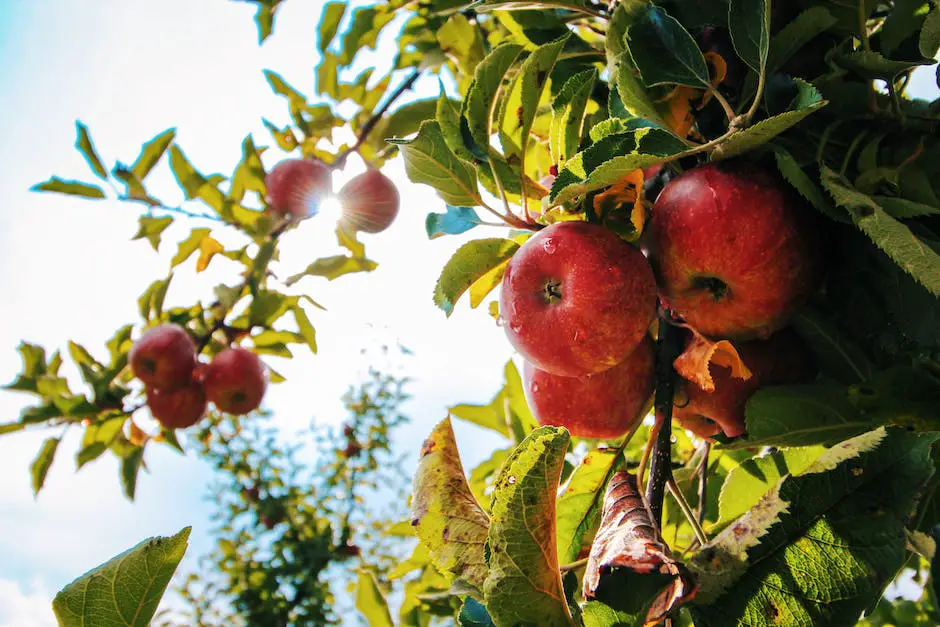
Peck Conversion to Pounds and Kilograms
When discussing the measurement of a peck of apples, it is essential to understand that the weight of apples can vary depending on various factors such as the species of apple, size, and packaging used. A peck is a unit of measurement used in the United States for dry volume, typically for agricultural products like apples. It is equivalent to 2 gallons, 8 quarts, or 16 pints. However, the conversion of a peck to pounds or kilograms differs depending on the density of the produce being measured. This variability showcases the necessity for societies to adapt and accommodate different measurements to ensure smooth commercial transactions and communication between parties.
To convert a peck of apples to pounds, a general rule is that a peck of apples weighs approximately 10-12 pounds. This value is an approximation since different apple varieties and sizes can cause slight variations in weight. For example, smaller apples generally weigh less compared to larger ones, thus leading to a lighter peck. Similarly, the density of the apple species can also affect the overall weight per peck, as some apples are denser and heavier than other varieties. In general, one can expect a peck of apples to weigh between 10 and 12 pounds.
The conversion of a peck of apples to kilograms follows a similar pattern to that of converting it to pounds. Since one kilogram is approximately 2.20462 pounds, converting the range of 10-12 pounds for a peck of apples would result in a value between 4.54 and 5.44 kilograms. As with pounds conversion, the weight of apples in the peck can vary due to the type of apple and its size, which means that the weight of a peck can fluctuate based on these factors.
When purchasing apples, it is essential to consider that the weight given for a peck is merely an estimate and not an exact number. As different farms and producers use different varieties and sizes of apples, there can be slight discrepancies in weight. This variability means that when purchasing a peck of apples, one may receive slightly more or fewer apples in their purchase if the weight of the apples differs from the standard 10-12 pounds estimate.
The weight of a peck of apples can vary depending on factors such as the size, variety, and density of the apples being measured. Being aware of the potential discrepancies in weights will help consumers make well-informed decisions when purchasing apples and allow for necessary adjustments in recipes or consumption plans.
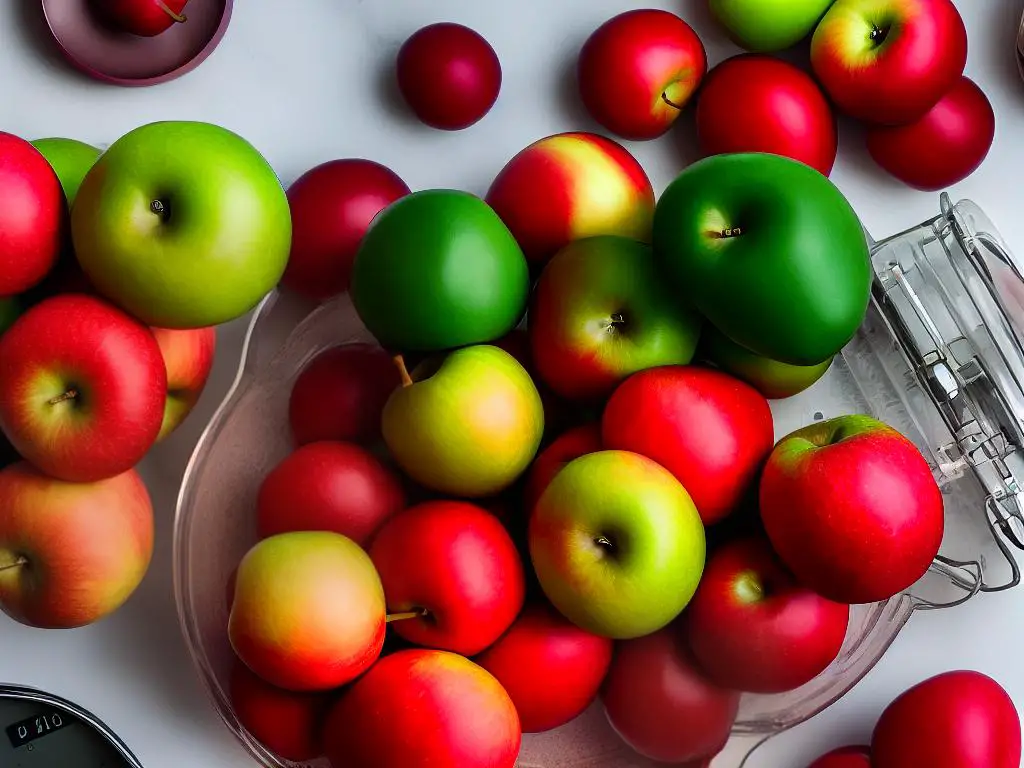
Uses and Applications of a Peck of Apples
Despite being a somewhat uncommon unit of measurement, a peck of apples is still used by farmers and apple enthusiasts today. Generally, a peck of apples weighs around 10 to 14 pounds, influenced by the size and variety of apples in question. This amount is popular because it provides a substantial supply for various uses, while remaining manageable for individuals or families to consume within a reasonable time frame.
One of the most common uses for a peck of apples is baking. With so many delicious apple-based recipes, such as apple pie, apple crisp, and apple dumplings, a peck of apples can provide enough fruit for several family gatherings or simply provide a satisfying afternoon snack. Different varieties of apples can have different flavors and textures, so a peck of apples with a mix of types can provide an interesting variety of flavors in the baked goods.Another popular application for a peck of apples is cooking. Apples can be incorporated into savory dishes, such as pork roasts and stews, or used in unique salads. Apple sauce is another popular dish made from apples, which can be enjoyed on its own or as a condiment. With a peck of apples on hand, people can try out various recipes and find a new favorite way to enjoy this versatile fruit.Preserving apples is another practical use for a peck. An excess of apples can be canned or dehydrated to extend their shelf life, allowing for the fruit to be enjoyed months after the harvest. Canning apple pie filling, making apple butter or jelly, and creating dehydrated apple chips are just a few ways to preserve a peck of apples for future consumption.A peck of apples offers a versatile ingredient for many delightful apple-derived products that can be enjoyed by the whole family. Apple cider, both alcoholic and nonalcoholic, is a popular choice for those who like to make their own beverages. Homemade apple cider can be served warm with spices on a chilly fall day or sipped cold during a sunny afternoon. Additionally, businesses such as cider mills and apple orchards may sell pecks of apples to be used in their operations, which supports local agriculture and provides the public with diverse, fresh, and delicious apple products.
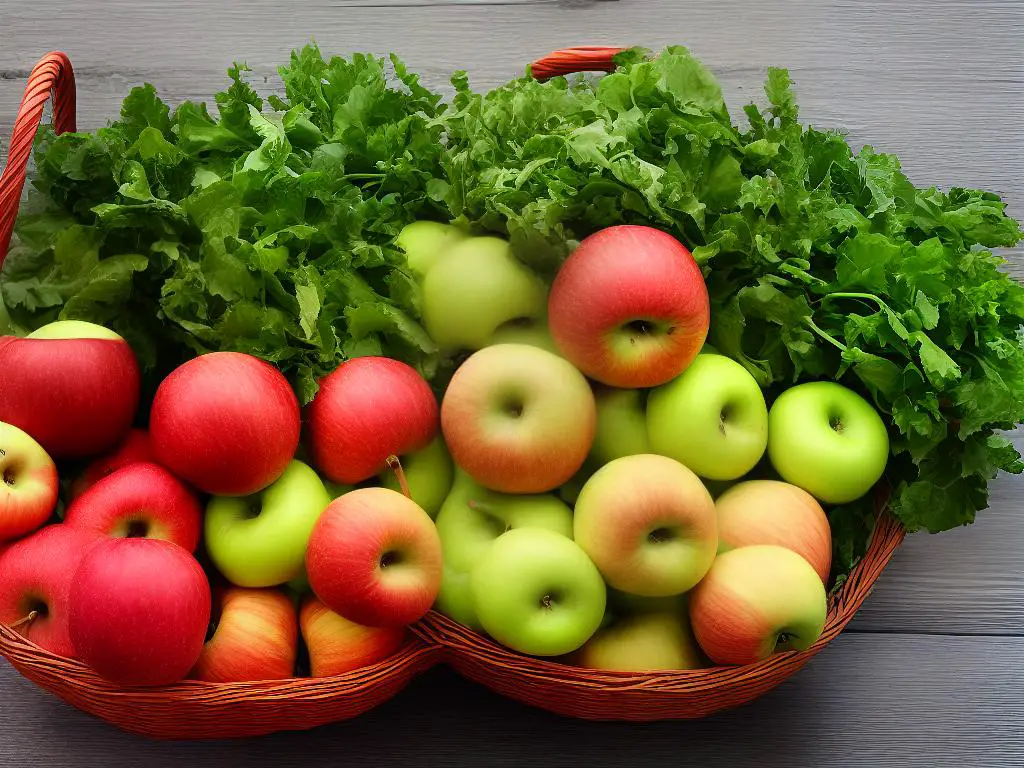
Pricing and Economic Considerations
Moving on to the cost aspect, one essential factor affecting the price of a peck of apples is the region where they are grown and sold. Apples are cultivated in various regions of the United States, primarily in the Northeast, Midwest, and Pacific Northwest. Each area is known for specific apple varieties that ultimately influence the price point. For instance, apples grown in the Northeast, such as McIntosh or Cortland, may differ in price from those produced in the Pacific Northwest, like Honeycrisp or Granny Smith. The overall cost of a peck of apples can vary by region due to factors such as production costs, transportation expenses, and local demand.
Seasonal availability also plays a vital role in determining the price of a peck of apples. Apples are a seasonal fruit, with the harvest season typically spanning from August to early November. During this time, the supply of apples is abundant, leading to lower prices in comparison to off-peak months. Additionally, the quality of apples varies throughout the year, with freshly harvested apples generally considered more desirable and nutritious. As a result, consumers may be willing to pay a premium for in-season produce.
In terms of the apple industry’s economic impact, its influence on the price of a peck of apples cannot be understated. The apple market is extensive, generating billions of dollars in revenue annually and creating numerous supply chain jobs. Consequently, any substantial changes within the industry, such as fluctuations in production levels, labor costs, or environmental factors, can directly impact the cost of a peck of apples. For instance, droughts or frosts could result in reduced apple yields, driving up prices due to limited supply.
Furthermore, the role of the consumer cannot be overlooked in assessing the price of a peck of apples. The concept of “willingness to pay” is crucial – if consumers are willing to spend more on apples due to perceived benefits or preferences for specific varieties, the price of a peck can be driven up. Similarly, many consumers are now prioritizing sustainably and locally grown produce, therefore they may be willing to pay extra to support local farmers and eco-friendly practices, which would affect pricing.
Global market forces and trade regulations also play a role in determining the cost of a peck of apples. Imported apples from countries with lower production costs can affect the domestic market due to their competitive pricing. Tariffs and trade restrictions on apple imports and exports can also lead to fluctuations in apple prices as producers and retailers adjust to meet the demands of consumers and maintain economic stability. As a result, the international market dynamics can have a ripple effect on pricing for a peck of apples within the United States.
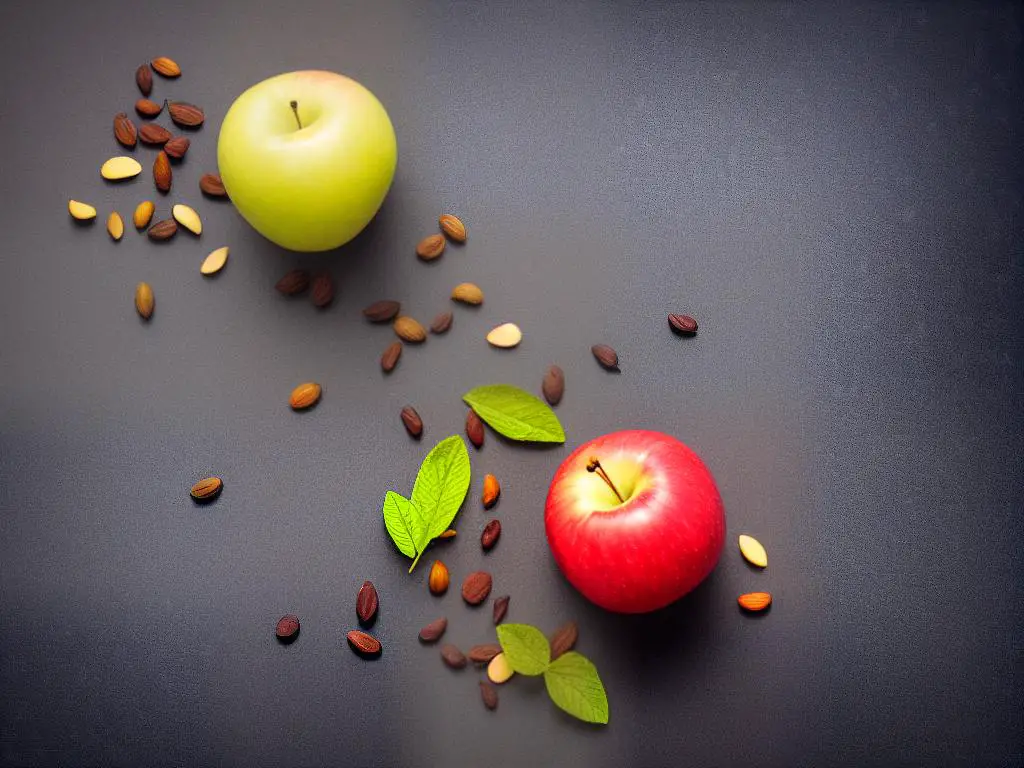
Environmental and Health Benefits of Apples
A peck of apples is an old-fashioned unit of measurement that is still commonly used in the United States, especially in the context of apple picking and selling. A peck is equivalent to 8 quarts or around 10-12 pounds of apples, depending on their size and variety. It’s important to understand the size of a peck when trying to grasp the impact of global market forces on apple prices.
Apples are an environmentally friendly crop due to their ability to grow in various climates, requiring less water than many other fruits, and the practices used in their cultivation minimize soil erosion. This makes apples a sustainable choice for both producers and consumers.
Apples are not only an environmentally sustainable fruit, but they also provide numerous health benefits. They are low in calories and high in essential nutrients, including vitamins A and C, potassium, and dietary fiber. Consuming apples regularly can help maintain a healthy weight, regulate digestion, support heart health, and reduce the risk of chronic diseases such as diabetes and certain types of cancer.
Another significant health benefit of apples is their antioxidant content, particularly in the skin where an essential compound called quercetin is found. Quercetin has anti-inflammatory properties and helps protect the body from oxidative stress, which is linked to chronic health issues. Together with other antioxidants present in apples, such as catechin, phloridzin, and chlorogenic acid, they create a natural defense system for the body.
In addition to the health benefits, apples also contribute positively to the local environment and community. Apple orchards, besides providing jobs and supporting local economies, can act as refuges for wildlife and foster biodiversity. The trees sequester carbon dioxide, which mitigates the impact of climate change and helps maintain the natural ecosystem. Furthermore, many apple growers are adopting eco-friendly practices such as integrated pest management, reducing the use of synthetic pesticides and fertilizers, and conserving water resources, promoting even more sustainable apple production.
Considering the environmental and health benefits of apples, it is no wonder many individuals and families enjoy picking and consuming these tasty and nutritious fruits. A peck of apples not only provides approximately 10-12 pounds of delicious fruit but also represents a more environmentally friendly, sustainable, and health-promoting option than many other fruits. When you consume a peck of apples, you’re not only satisfying your taste buds, but you’re also contributing to a healthier you and a greener planet.
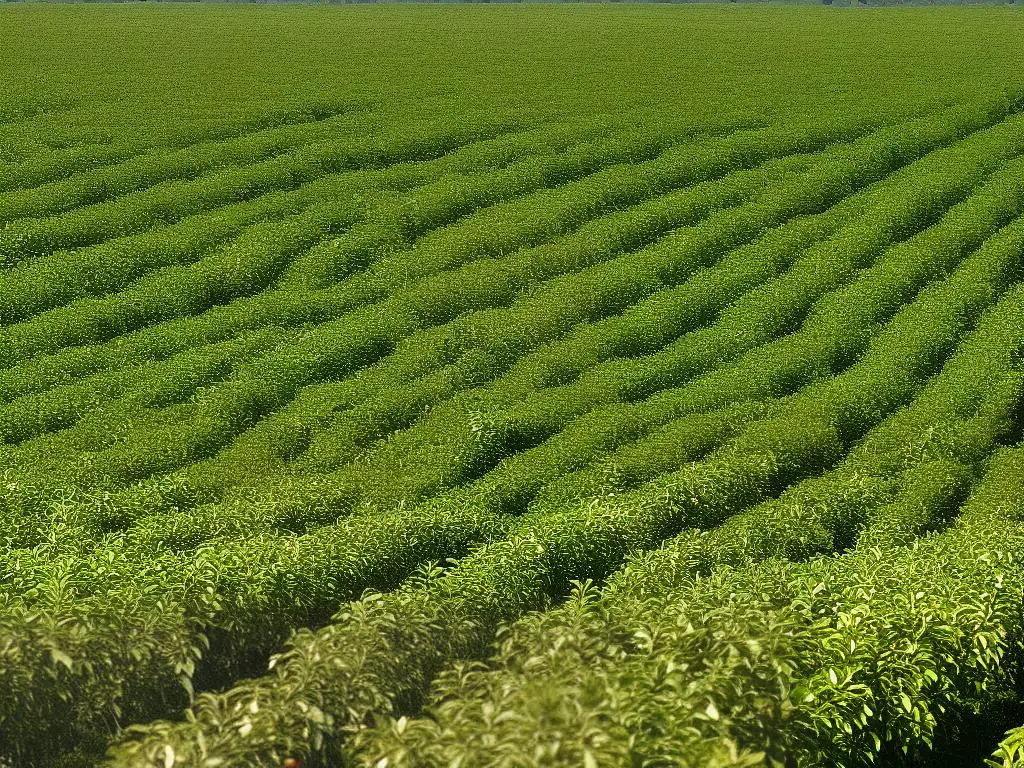
As we’ve delved into the world of apples and pecks, it is clear that this simple fruit and unit of measurement have a rich and diverse history, with far-reaching implications. From the conversion rates, varied uses, pricing factors, and numerous health and environmental advantages, apples have undeniably secured their place as a versatile and beneficial staple in our lives. As you take each delicious bite, remember the fascinating story, and the wonderful ways apples continue to nourish our bodies and the world around us.
